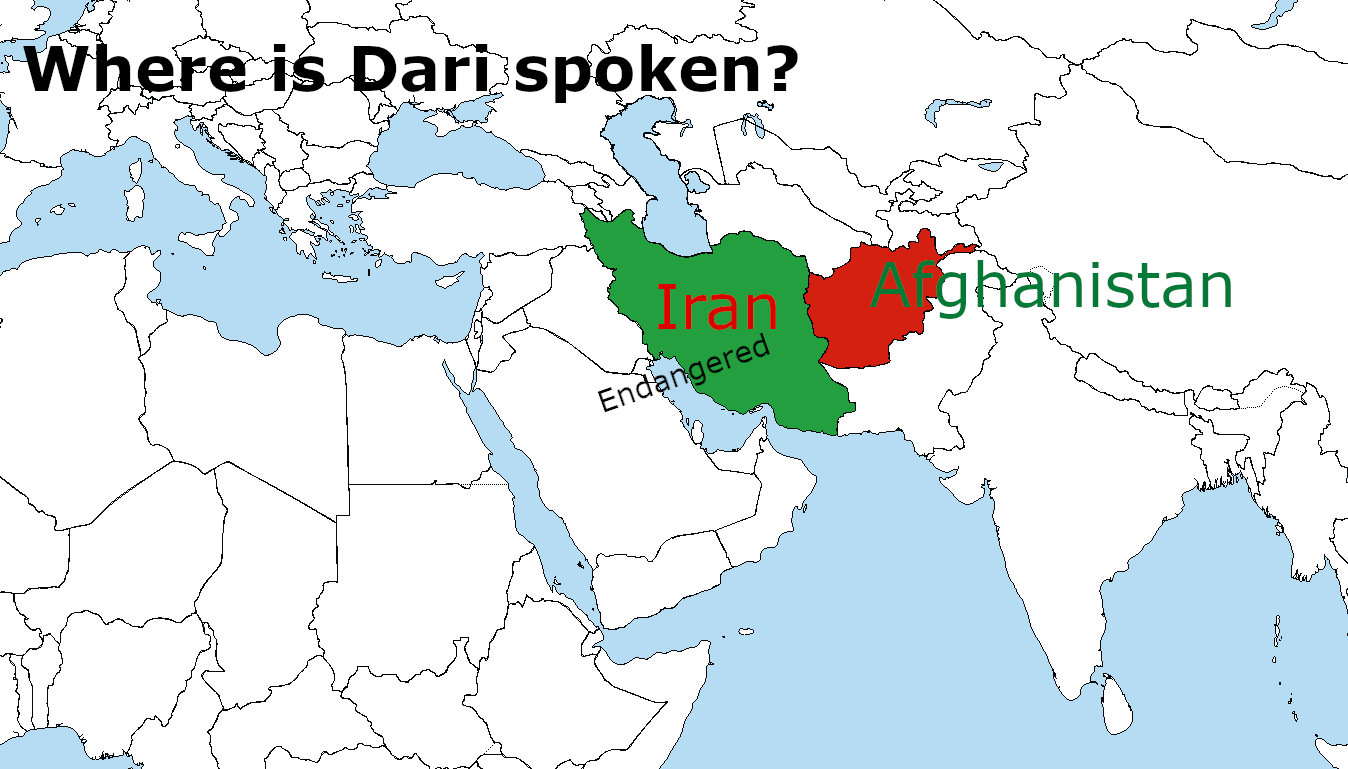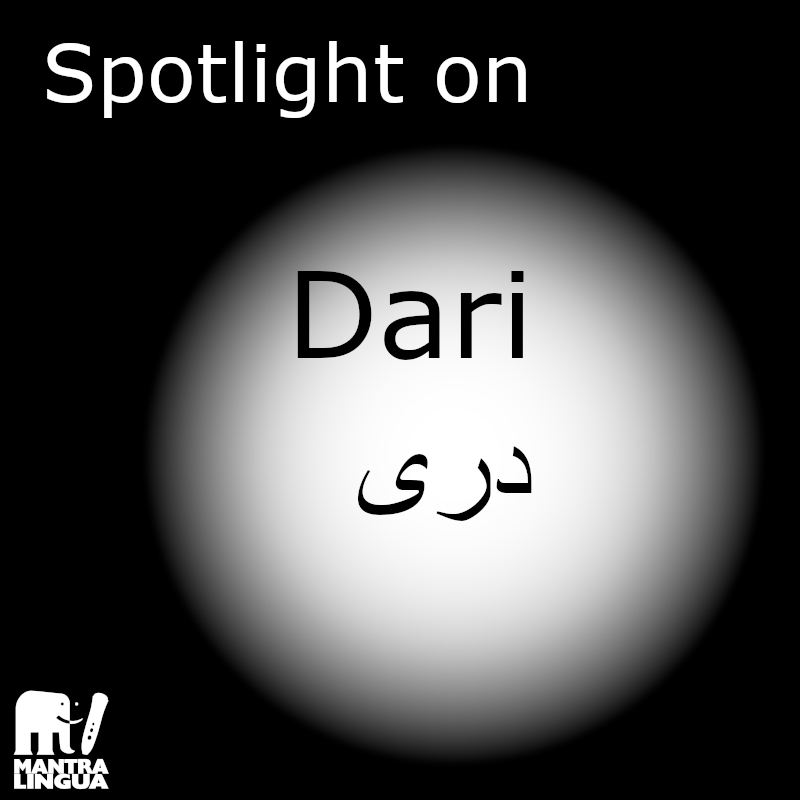Spotlight on Dari
Dari might seem like an unlikely language to make it onto UNESCO’s list of Endangered Languages; about half of Afghanistan’s population understand Dari, and nearly a third speak it, meaning there are an estimated 8-9 million speakers of this Indo-Iranian language, sister to Persian and Farsi.

Don’t confuse Dari for a dialect though: it is its own language, but it does have many dialectal variations itself: for instance Persian Dari, Kerman, Shamaly, Parsiwan, Herati, Tajiki, Yazd, Kabuli, and Khorasa.
With so many speakers and such a rich tapestry of dialects, why is it even on the list? Well, it’s actually in Iran that the language is endangered, where many speakers are losing Dari and turning to Persian instead.
Dari is written and read from the right to the left, like many Indo-Iranian scripts (Arabic, Urdu, Sorani Kurdish, Pashto, and Farsi are some that will look similar to a non-speaker.)
What does Dari look and sound like? Click on the video below to find out!
Though not all, many Dari speakers are Muslim, and so will just have ended the month of Ramadan with Eid al-Fitr, on the 12th of May in 2021, just like Samira and her brother Hassan in the book Samira’s Eid.
We are proud and happy to have this among our many languages, and have printed the following titles in Dari and English (with more upcoming this year):
Goldilocks and the Three Bears
Sports Day in the Jungle
Head, Shoulders, Knees and Toes
Walking Through the Jungle

Don’t confuse Dari for a dialect though: it is its own language, but it does have many dialectal variations itself: for instance Persian Dari, Kerman, Shamaly, Parsiwan, Herati, Tajiki, Yazd, Kabuli, and Khorasa.
With so many speakers and such a rich tapestry of dialects, why is it even on the list? Well, it’s actually in Iran that the language is endangered, where many speakers are losing Dari and turning to Persian instead.
Dari is written and read from the right to the left, like many Indo-Iranian scripts (Arabic, Urdu, Sorani Kurdish, Pashto, and Farsi are some that will look similar to a non-speaker.)
What does Dari look and sound like? Click on the video below to find out!
Though not all, many Dari speakers are Muslim, and so will just have ended the month of Ramadan with Eid al-Fitr, on the 12th of May in 2021, just like Samira and her brother Hassan in the book Samira’s Eid.
We are proud and happy to have this among our many languages, and have printed the following titles in Dari and English (with more upcoming this year):
Goldilocks and the Three Bears
Sports Day in the Jungle
Head, Shoulders, Knees and Toes
Walking Through the Jungle
Related Posts
-
Once Upon a Storytime
-
Marigolds - Treasured Gardens in Lockdown
-
Early to bed, early to rise, makes [us all] healthy, wealthy and wise.
-
Making a splash!
-
PENpal Supports Focus on Oral Language Skills
-
Season's Greetings
-
A Few Fun February Facts
-
Ten Tips to Help Your Child Adjust to Life in a New Country
-
Look Before You Leap – And What Have Silk Gloves Got To Do With Leap Years?
-
How to help your bilingual child speak your first language













